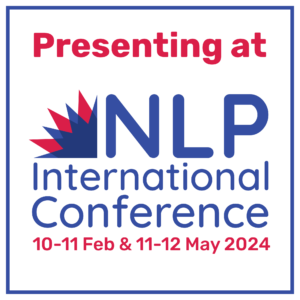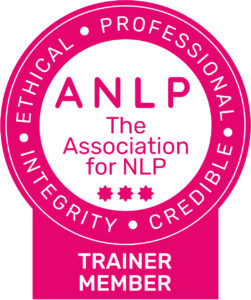How to Change Your Beliefs Using NLP Techniques

Limiting beliefs can make our world a smaller place. They are a kind of internal prison that we carry round with us, a self-imposed yoke, a limitation.
Limiting beliefs and NLP
Changing such limiting beliefs is at the heart of modern NLP, and nobody has done more to put it there than Robert Dilts at NLPU. He has created a number of processes designed to challenge and change beliefs.
Perhaps the most powerful of these is Reimprinting. Rather than just challenge beliefs intellectually, as Gladwell did with ‘David was the underdog’, he wants to do so experientially, taking people back to the time when beliefs were formed.
How to do this
To do this (as a coach, you can do this with a client, but for this piece I am assuming you are working on yourself):
- Create a timeline, then, on the ‘present’ place on the line, fully associate yourself with the thoughts and feelings of this unhelpful belief.
- Walk back down the timeline, pausing at points where the belief was particularly strongly felt or impacted on your life in some way.The aim is to reach the moment when the belief was ‘imprinted’ into your brain (and body). You will become aware of this, as you will uncover a powerful memory associated with the imprinting, and also because if you walk further back down the timeline, those specific thoughts and feelings becomes much weaker or nonexistent.
- You then step off the timeline, and take a ‘fly on the wall’ or meta position opposite your present position on the line. The adult you now, can look back and pretend to see the younger you standing on that line.From here, you can look back at the imprinting experience.
- You can then unpack it:
- First, what was the benefit to you of taking the belief on board?It could be feeling part of a family group, as your parents held this belief or perhaps it provided a strategy for you to get some form of protection at that time.
- Next, ask what the experience was like for significant (to you) other people involved. Say your parents, or siblings were present at the even.
- Then go back to the experience on the timeline, and pretend to be one of these people. Associate with them.
- Then step out, and ask what they wanted from the situation. What resources would they have needed to feel and act differently? How could they have got the same outcome without having to resort to passing on prejudice? When you have answers, find a place on your timeline where you have those resources yourself, then imagine yourself sending them to the ‘significant other’. Then go and step in as that significant other in the past and receive those resources from you.
- Do this for every significant participant – this process can take time, but let it; it’s worth it. Then do it for yourself.
- Finally, you step onto the line at the imprinting point, now armed with this resource.
Pause to reimagine how things would have been, and let the scenario run till you have a story with which you are happy.
Then walk slowly up the timeline, pausing at those times where the unhelpful belief had a strong effect, but now bringing the ‘new you’ to bear on the situation. How does it feel now? When you return to the present, look forward and welcome the future.
Concluding thoughts
Like many such processes, this looks simple on paper but can take a long while and require skill and (if you do it with others) empathy.
I feel very strongly that it is best learnt on a proper training course, where you can watch other people do it, try it yourself, get stuck and make mistakes in the company of a skilled resource team who can put you back on track, and generally learn by doing. I know, I would say this, wouldn’t I? And I would also add that reimprinting is one of the techniques covered on our Master Practitioner course, wouldn’t I? But I really do feel that is a wonderful place to learn this powerful stuff really thoroughly. Come and find out for yourself.
Did you like this post?
Then check out our events and courses!
Where to find us
For posts, events, free open days and more, follow NLP School on:
What to read next
How to Avoid Self-Sabotage and Binary Thinking









